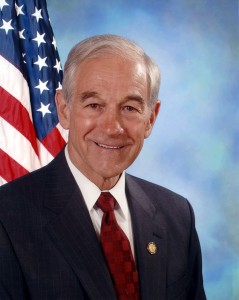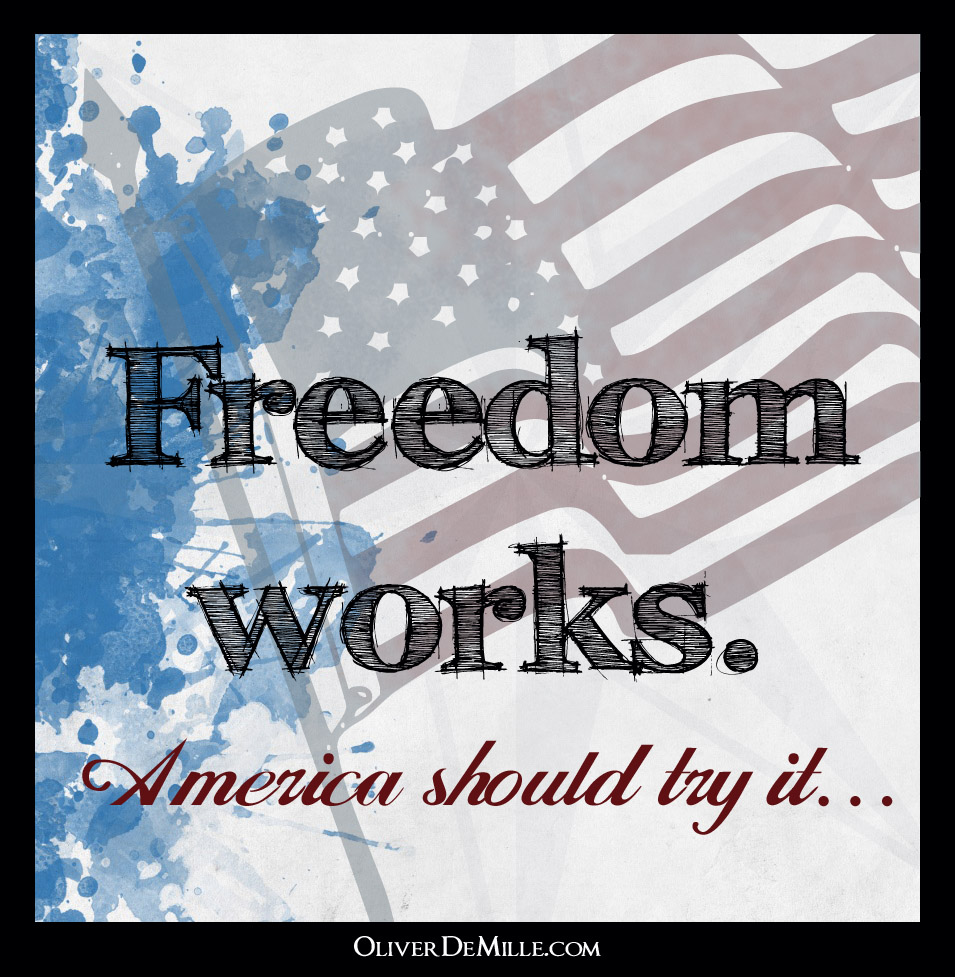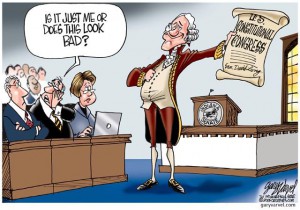Ron Paul Is the Winner in 2015 by Oliver DeMille
September 18th, 2015 // 7:14 am @ Oliver DeMille
Why the Republican Establishment Is Surprised
(and a bit clueless)
by Oliver DeMille
Shock and Awe
 The current presidential election has left most of the Establishment speechless. They are shocked by the rise of Bernie Sanders, shocked by the success of Donald Trump in the polls, and shocked by the popularity of Ben Carson. “Shocked” may actually be too weak a word. Apoplectic, maybe?
The current presidential election has left most of the Establishment speechless. They are shocked by the rise of Bernie Sanders, shocked by the success of Donald Trump in the polls, and shocked by the popularity of Ben Carson. “Shocked” may actually be too weak a word. Apoplectic, maybe?
The Establishment is also surprised by the struggles of Hillary Clinton, Jeb Bush, Marco Rubio, and Scott Walker—all of whom were widely predicted to dominate this election cycle.
“Why is this happening?” is a popular question on many political news programs right now. Along with: “Will it continue?” “What will happen next?” and “Why are the voters so angry?”
Conservatism 1.0
The answer is fascinating. To get there, let’s start with the roots of the modern conservative movement. Initiated largely by William F. Buckley, Jr. and his colleagues in the 1950s and 1960s,[i] Conservatism 1.0 struggled, persisted, gained support slowly, and then rose to victory with the election and presidency of Ronald Reagan.
The Party of Reagan was based firmly on the view that “liberalism is bad.” In this environment, Reagan’s GOP found itself directly opposed to the Democratic Party of Franklin Delano Roosevelt and his progressive successors.
The ensuing debate pitted conservatism against liberalism in a few direct, simple ways: limited government versus big government, Constitutional originalism versus judicial activism, American exceptionalism versus European style internationalism, and individualism versus collectivism.
Republicans saw conservatism as good precisely because it espoused limited government, strict adherence to the Constitution, American leadership in the world, and individual freedoms. They saw liberalism as bad because it promoted big government, an activist Court, American subordination to international organizations, and widespread collectivism through higher taxes and increased government programs in all facets of life.
This was the battle of Postwar America. And conservatives saw themselves as the Keepers of Freedom and Family Values in this monumental conflict—warriors for the American Dream and the American way of life.
After the financial downgrade of the Soviet Union during the Reagan years and the fall of the Berlin Wall in 1989, the battle lines were slowly redrawn. New superpowers emerged on the world stage, and existing alliances began to unravel. Naturally, during the 1990s the old battles were replaced with new ones, and in the 2000s world and national allegiances were weakened, redirected, and reconceived.
But the hearts of many 20th Century conservatives (and liberals, for that matter), raised and steeped in the old battles, didn’t change.
Conservatism 2.0
 A new cultural movement sprouted in the different soil after 1989. In technology, this shift was exemplified by Steve Jobs, and eventually Elon Musk. In business, the iconic figureheads were Bill Gates and Warren Buffett. And on the political front, the pioneers of a new model were Ross Perot and Ralph Nader, and later Bernie Sanders and Ron Paul.
A new cultural movement sprouted in the different soil after 1989. In technology, this shift was exemplified by Steve Jobs, and eventually Elon Musk. In business, the iconic figureheads were Bill Gates and Warren Buffett. And on the political front, the pioneers of a new model were Ross Perot and Ralph Nader, and later Bernie Sanders and Ron Paul.
Congressman Paul’s contribution to the new brand of conservatism that arose is hard to overstate. For example:
- It replaced Reagan’s 11th Commandment (“Thou shalt not criticize other Republicans”) with a focus on principles of freedom rather than institutional political parties.
- It walked a fine (and frequently uneasy) line between party loyalty and going independent, finally resting on the idea that independence is more important than party—but sometimes it’s possible to get both.
- It called into question widespread U.S. military interventionism.
- It reemphasized the Constitution as a central, literal theme, rather than a mere national symbol.
- It put actual free enterprise above the rhetoric of free enterprise (rhetoric that most Republican presidents had ironically combined with bigger government).
- It appealed strongly to populism—“this is the people’s government, not vice versa.”
- It switched the viewpoint of conservatism from “liberalism is bad” to “government by elite power brokers and their bureaucratic agents is bad.”
Paul himself wasn’t able to convert this revolution into a White House victory, but the revolution occurred nonetheless. And the 7th point of this revolution is perhaps the most important. It animated the Tea Parties, the elections of 2010 and 2014, and it is still growing today.
It also explains the shock of the current Republican Establishment with the ousting of Eric Cantor, the support for Donald Trump, Ben Carson, and Carly Fiorina, and the popularity of Ted Cruz in comparison to Jeb Bush or Scott Walker.
Mitch McConnell, John Boehner, John McCain, Mitt Romney, Jeb Bush, and most of the Republican Establishment are operating as if the GOP is still Reagan’s party. But this is debatable. A large segment of the party is now more aligned with Conservatism 2.0.
Thus the passionate battle now underway for the future of the GOP. And with each passing election cycle, the popularity of Conservatism 2.0 is increasing.
What 2.0 Conservatives Want
To these new conservatives, the idea that “liberals are bad” is SO forty years ago. The real issue now is that “government by elites” is bad.[ii] “The elite class is bad. It is corrupt, and it’s hurting us all. It is hurting America.” In fact: “Corruption is bad. And elites are corrupt.” This viewpoint is growing.
And to members of the new conservatism, Republican elites are just as bad as liberal elites. Many consider them even worse, like modern wolves in sheep’s clothing, claiming conservatism, and gaining support for their candidates and policies by invoking conservatism, while refusing to passionately or effectively fight for it.
It is important to clarify that the Ron Paul revolution didn’t win all 7 of its main themes. The new 2.0 conservatives never warmed up to items 3 and 4, for instance:
3-less U.S. military interventionism in the world
4-more emphasis on the literal words of the Constitution
But, on the other hand, they bought the following principles hook, line and sinker:
1-focus on principles of freedom rather than institutional parties
6-populism: forget “electability” and support the candidate we think will really bring about the changes we want
7-government by elites is corrupt and bad
This tectonic shift put Carson, Trump, Fiorina and Cruz at center stage.
A Question
It remains to be seen if a 2.0 candidate can become the nominee anytime soon. And even more significant is the question of whether a 2.0 president will actually apply item 5 from the list:
5-actual free enterprise is the goal, not just the rhetoric of free enterprise
Such an approach would lead to balanced budgets, reversal of the U.S. national debt, and a high-growth economy spurred by a massive rollback of anti-small business regulation. Right now many 2.0 voters are split. They’re asking themselves if Trump or Fiorina would actually lead a serious downsizing of government—or instead just expand government like past 1.0 conservative presidents.
As for Carson and Cruz, they seem clearly committed to this approach, but 2.0 conservatives wonder if they have the capacity or authentic will to actually pull it off.
If the 2.0 crowd ever coalesces around one candidate, he or she is going to be very hard to beat—in the primaries, and even in the general. A motivated 2.0 nation will be very persuasive among independents, women, and young voters. And 2.0 is very strong in the swing states. But 2.0 conservatives won’t “go for it” if they are at all uneasy about the candidate’s direction or ability. They are, in a sense, playing the long game, and won’t blow their one-shot-at-the-big-house political capital on an also-ran.
The Election
A long primary and general election fight is still ahead, and this war between conservatism 1.0 and 2.0 won’t be easily resolved. It has already turned nasty, and it will probably get a lot worse.
But if 1.0 wins, if Jeb or another Establishment candidate is the eventual nominee, this fight will rage on. Conservatism 2.0 is young, passionate, and has the benefit of a large and growing base. It may or may not get its way in 2016, but all indications are that it will eventually win the war.
When it does, expect the president it propels into the White House to alter American history as significantly and lastingly as the 1.0 movement did with Ronald Reagan.
(Read more discussion on these themes in FreedomShift, by Oliver DeMille)
[i] With significant support by additional voices including Leo Strauss, Milton Friedman, Leonard Read, Friedrich Hayek, Russell Kirk, Richard Weaver, Ludwig von Mises, Ayn Rand, and Margaret Thatcher, among others.
[ii] In comparison, Liberalism 2.0, supported early on by Hobson and Mencken and Keynes, among others, and perhaps most embodied in current events by President Obama (and espoused by Bernie Sanders), frequently operates on the idea that “America is bad.” European social democracy is promoted as the alternative, the ideal, and the goal.
Category : Aristocracy &Blog &Citizenship &Community &Constitution &Culture &Current Events &Economics &Foreign Affairs &Generations &Government &History &Independents &Leadership &Liberty &Mission &Politics &Statesmanship













Matthew Carling
10 years ago
Good summary of the conservative shift. Conservatism 1.0 is alive and well in the Utah Legislature. I’ve always said it wasn’t a good idea to be branded a “Reagan Republican” anymore. Hint, hint Governor. The 1.0s aren’t going to shift to 2.0 until they sacrifice some of their free time in good books.
Jennifer Bond
10 years ago
Matthew Carling, you mentioned good books; what are a few of your favorites?